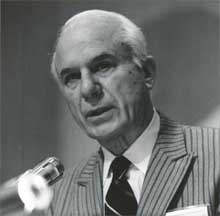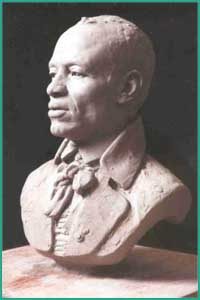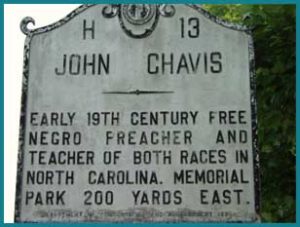The Strange Testimony of an Irish Presbyterian
by Rev. David T Myers
When my fellow editor, Wayne Sparkman, asked me to present this biographical post of a character from the eighteenth century, and sent me some material from which to write it, one sentence jumped out of the sentences about this Presbyterian minister. That sentence was that “he was suspended for contumacy.”
Now, lets face it, the word “contumacy” is not a word which we use every day, or even every month. According to Webster, it comes from the Latin which means “rebellious.” Thus, it is “stubborn resistance to authority, specifically willful contempt of court.” And the “court” here means the church court, like the Presbytery. In that sense, it is found in the PCA Book of Church Order, in the Rules of Discipline, chapter 32:6 and 33:2, 3 to speak of those who refuse to either appear or answer the charges of a church court. And that is what happened to our character today, the Rev. James Martin.
The facts are that James Martin was born in Ireland in 1725, educated in Scotland, studied theology in the Antiburger Divinity Hall, class of 1749, and ordained in Bangor, Ireland, in 1753, and received by the Presbytery of Pennsylvania, at Pequea, Pennsylvania, on August 1, 1775.
Certainly he was not known then as a contumacious minister. The certificate which accompanied his transfer to America stated that “he was for many years a member of the Associate Presbytery of Moira and Lisburn, in Ireland, and behaved soberly and inoffensively, suitable to his character as a minister and Christian.” The written draft went on to state that “he departs with an unblemished reputation” with nothing to hinder his admission as a member of the Associate Presbytery of Pennsylvania..
And so he ministered the Word of God and the testimony of Jesus Christ in the counties of Franklin, Adams, Cumberland, and Northumberland in Pennsylvania. He also ranged far south in the “states” of Virginia and North Carolina.
From what little we can ascertain, he declined the spiritual authority of the Presbytery in 1777. They disciplined him with suspension of his ministry credentials. Yet it is odd that we read of his continuing ministry with spiritual profit to members in Presbyterian churches until his death on this day, June 20, 1795. What gives?
Words to Live By:
We can only surmise that his continuing ministry after his suspension by the Presbytery meant that there was a spiritual repentance and restoration as a Presbyterian undershepherd. That is possible, given biblical repentance, but as our Book of Church Order states, “he (must) exhibit for a considerable time such an eminently exemplary, humble and edifying life and testimony as shall heal the wound made by his scandal.” (Rules of Discipline, 34:8.) While the court which brought about the censure has the ultimate responsibility to do that, all of us Christians need to be ready as Paul puts it in Galatians 6:1, “Brethren, if a man be overtaken in a fault, ye which are spiritual, restore such an one in the spirit of meekness: considering thyself, lest thou also be tempted.” (KJV) The case of “overtaken” speaks of being overtaken suddenly by a sin. In addition, the word “restore” is a medical one. It spoke of a bone out of joint, which was to put back tenderly and resolutely by those who are spiritual. Are you available and able to become that kind of spiritual helper to restore a sinner who is repentant to the visible church of Jesus Christ?



 John Chavis was born in 1763 (or possibly 1762) in Granville County, North Carolina—a sparsely populated area north of Raleigh bordering Mecklenburg County, Virginia. While the details surrounding his early life and ancestry can be hazy, we know that members of the Chavis family were, along with one other family (the Harrises), the first people of African descent to be recognized as free persons in Granville County. John Chavis—whose lineage was a mix of African, American Indian, and Caucasian—came from a distinguished line of free Blacks who owned property and were committed to educating themselves as best they could. A descendant of Chavis later recalled, “My grandmother, mother, and great grandmother were all free people and Presbyterians.”
John Chavis was born in 1763 (or possibly 1762) in Granville County, North Carolina—a sparsely populated area north of Raleigh bordering Mecklenburg County, Virginia. While the details surrounding his early life and ancestry can be hazy, we know that members of the Chavis family were, along with one other family (the Harrises), the first people of African descent to be recognized as free persons in Granville County. John Chavis—whose lineage was a mix of African, American Indian, and Caucasian—came from a distinguished line of free Blacks who owned property and were committed to educating themselves as best they could. A descendant of Chavis later recalled, “My grandmother, mother, and great grandmother were all free people and Presbyterians.” After three decades of successful teaching and preaching—and, it seems, a measure of prosperity from dabbling in real estate—Chavis saw his ministry (and his money) dry up in the 1830s. In 1832, in response to Nat Turner’s Rebellion of August 1831, the North Carolina legislature made it unlawful for any free person of color to preach or exhort in public or to officiate as a preacher. Chavis pleaded with the Presbytery for financial support, but the collection they took was little more than $50. In an effort to pay his bills and provide for his wife and children (about whom we know next to nothing), he requested in 1832 that the Presbytery publish his Letter Upon the Doctrine of the Extent of the Atonement of Christ. The Presbytery denied the request, arguing that the subject had already been dealt with by others and there was little chance the short pamphlet would produce much income. No doubt, the Presbytery also demurred because Chavis had drifted from confessional Reformed orthodoxy. In the Letter, Chavis argued that the free offer of the gospel was inconsistent with limited atonement and that the eternal decrees of God were based on “nothing more nor less than his foreknowledge.” Judging by his Letter, Chavis was a passionate gospel preacher who aligned with the New School wing of the Presbyterian controversies of the 1830s.
After three decades of successful teaching and preaching—and, it seems, a measure of prosperity from dabbling in real estate—Chavis saw his ministry (and his money) dry up in the 1830s. In 1832, in response to Nat Turner’s Rebellion of August 1831, the North Carolina legislature made it unlawful for any free person of color to preach or exhort in public or to officiate as a preacher. Chavis pleaded with the Presbytery for financial support, but the collection they took was little more than $50. In an effort to pay his bills and provide for his wife and children (about whom we know next to nothing), he requested in 1832 that the Presbytery publish his Letter Upon the Doctrine of the Extent of the Atonement of Christ. The Presbytery denied the request, arguing that the subject had already been dealt with by others and there was little chance the short pamphlet would produce much income. No doubt, the Presbytery also demurred because Chavis had drifted from confessional Reformed orthodoxy. In the Letter, Chavis argued that the free offer of the gospel was inconsistent with limited atonement and that the eternal decrees of God were based on “nothing more nor less than his foreknowledge.” Judging by his Letter, Chavis was a passionate gospel preacher who aligned with the New School wing of the Presbyterian controversies of the 1830s.